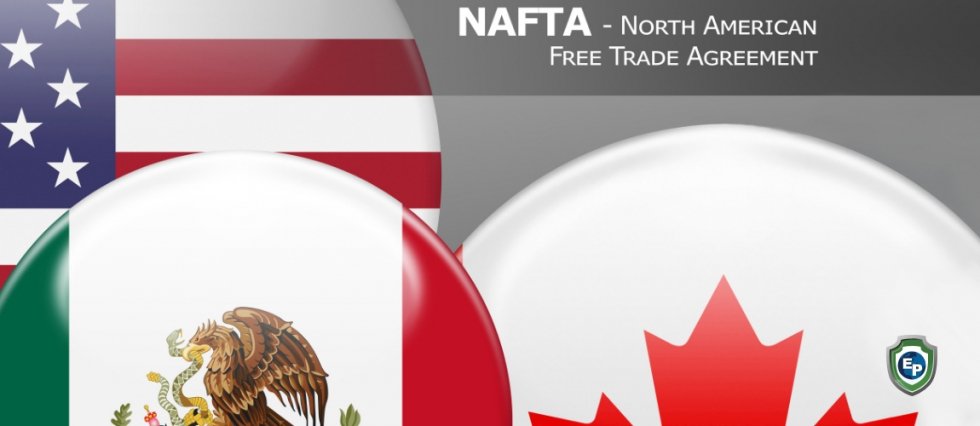NAFTA vs USMCA : What are the differences? Pros? Cons?
In July, the USMCA came into effect to replace NAFTA. Read our blog to find out what has changed and what the pros and cons of the new Agreement are.

The North American Free Trade Agreement (NAFTA) was an agreement between the USA, Mexico, and Canada. It formed and shaped the basis of trade between the three nations from the 1990s to the mid-2010s.
However, during the 2016 presidential campaign, President Donald Trump campaigned against NAFTA and blamed business and manufacturing job losses in America on this treaty. After he got elected, President Trump immediately set out to get a better trade deal: the United States-Mexico-Canada Agreement (USMCA). This new deal is often called the New NAFTA or NAFTA 2.0 because it isn't seen as a completely new trade deal but more as an incremental change. The USMCA came into effect on July 1st, 2020.
What changed?
During the two decades of its existence, NAFTA saw regional trade growing from approximately $290 billion in 1993 to more than $1.1 trillion in 2016. Cross-border investment also increased, with the U.S. investments in Mexico growing from $15 billion to $100 billion in the same period. Canada also saw U.S. investments grow from $70 billion in 1993 to $368 billion in 2013.
But, the USMCA promises even more growth by supporting mutually beneficial trade and promising fair trading, more free markets, and strong economic growth in North America.

Some of the key additions to the USMCA were:
- A tightening on the rules of origins for the auto industry to qualify for zero tariffs. It increased the requirement from 62.5% to 75% for the car to be made in North America.
- Labor rules now require 40% of each vehicle to come from factories paying a minimum wage of $16 per hour.
- Eliminating the Investor-State Dispute Settlement (ISDS) between the USA and Canada.
- Limiting ISDS to specific sectors between the U.S. and Mexico.
- Canada opening its dairy markets to U.S. farmers.
- Extending the terms of copyright from 50 years to 70 years.
- Prohibiting discriminatory measures on digital products like music, ebooks, software, etc.
- Protecting Internet companies from liabilities on user content.
- Improved labor practices that allow Mexican workers to unionize.
- Better environmental standards.
Pros and Cons of USMCA
There are many pros to the new agreement. Protections for individuals and industries have strengthened, while reduced tariffs have managed to lower costs of production, decreasing prices for consumers but increasing profits for companies. Decreased wage gaps and the implementation of stricter labor laws have greatly benefited many employees as well, and new protections for data markets and healthcare have pushed firms to be more competitive.
However, the cons are inevitable, as well. Although some industries have seen greater protections and an increase in costs, this is not the case for all. Stricter labor laws mean no more exclusive control for drug manufacturers, and production costs will likely increase if wages increase.
The USMCA will be in effect for 16 years, after which the parties can choose to revisit or renegotiate terms or withdraw from the agreement altogether. It can also extend after the first six years if all the parties agree to it.
Stay in the Loop with Export Portal
In the world of trade, you must always be updated and be in the know. For more articles like this one, make sure to check out Export Portal’s blog and learn everything trade-related!






Comments 0